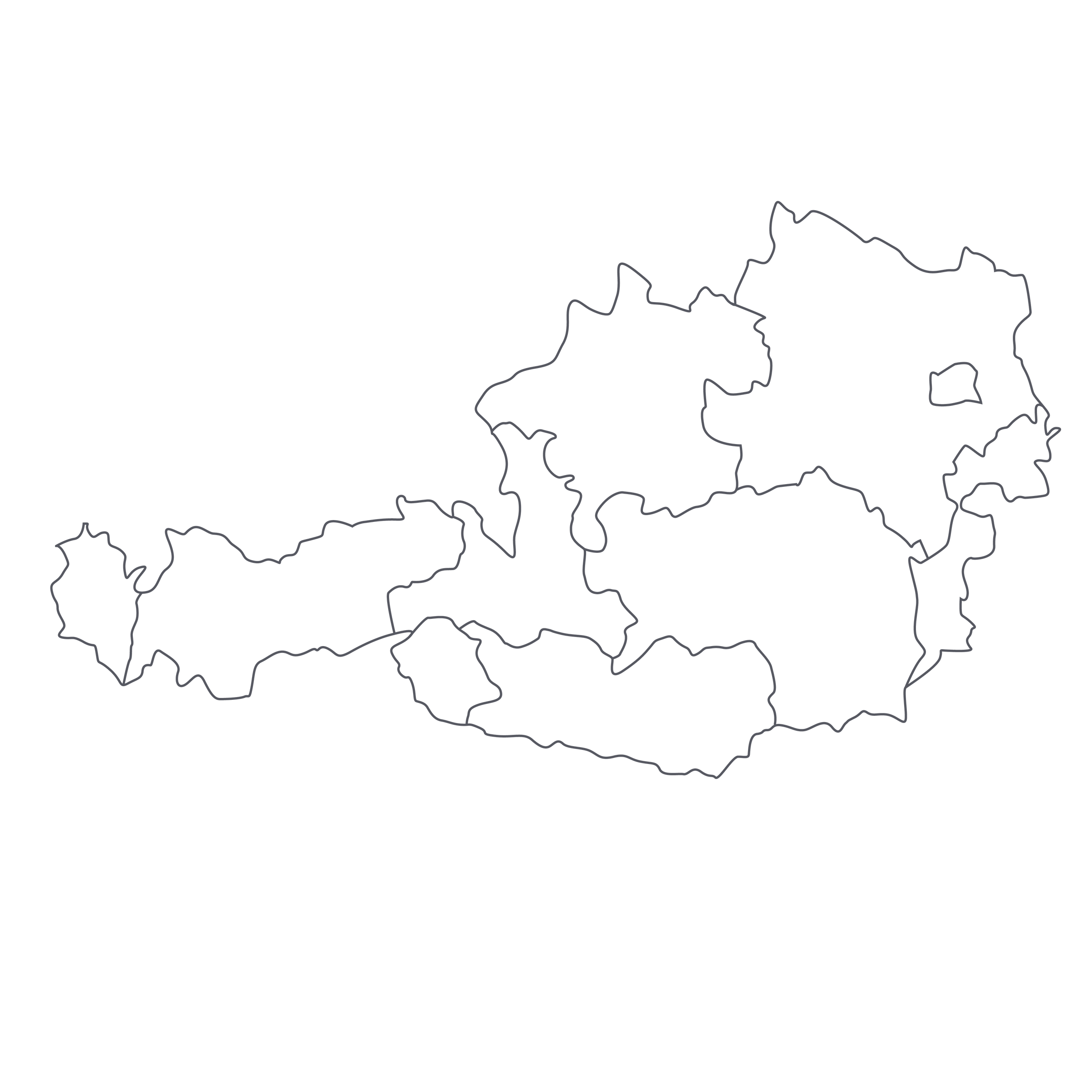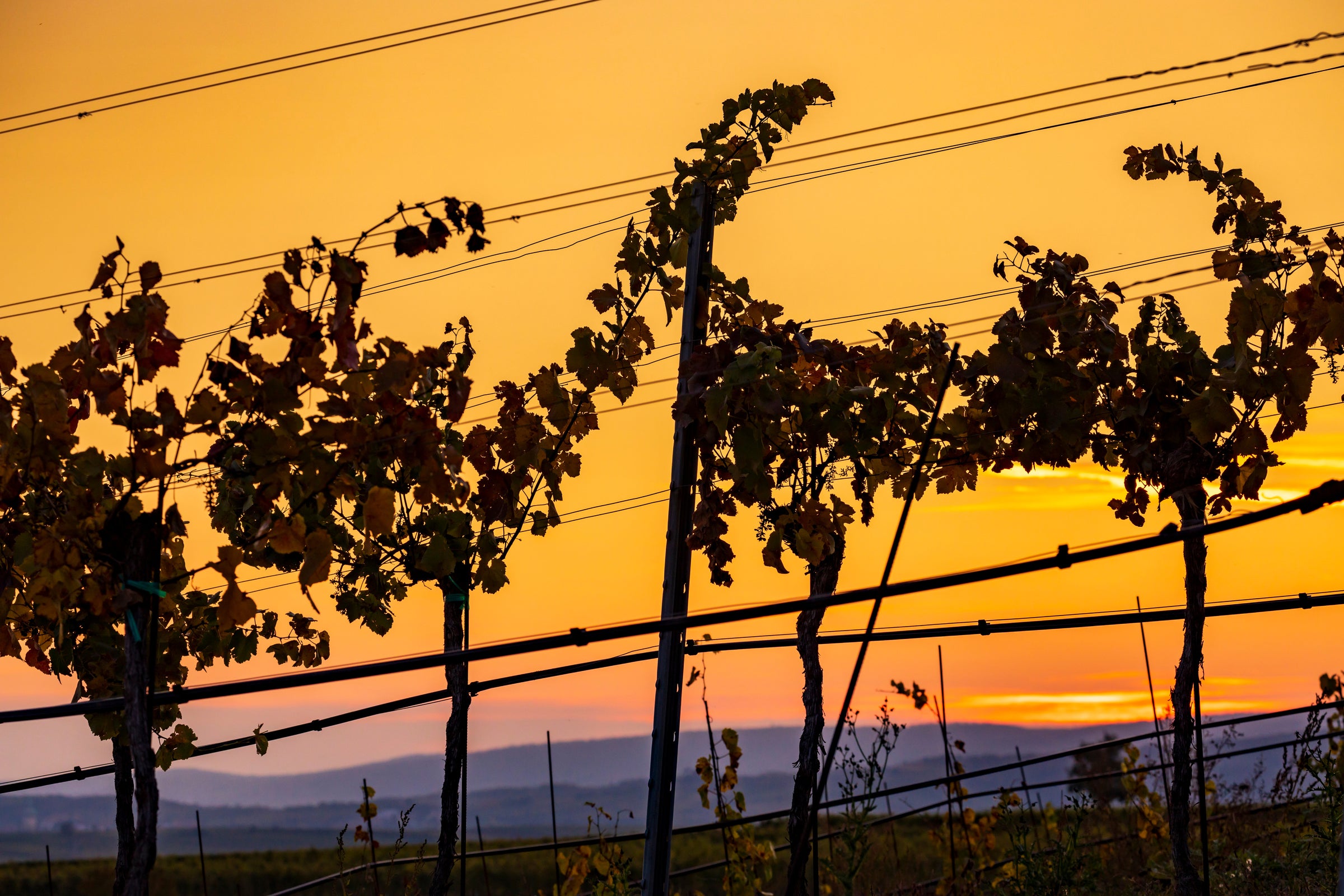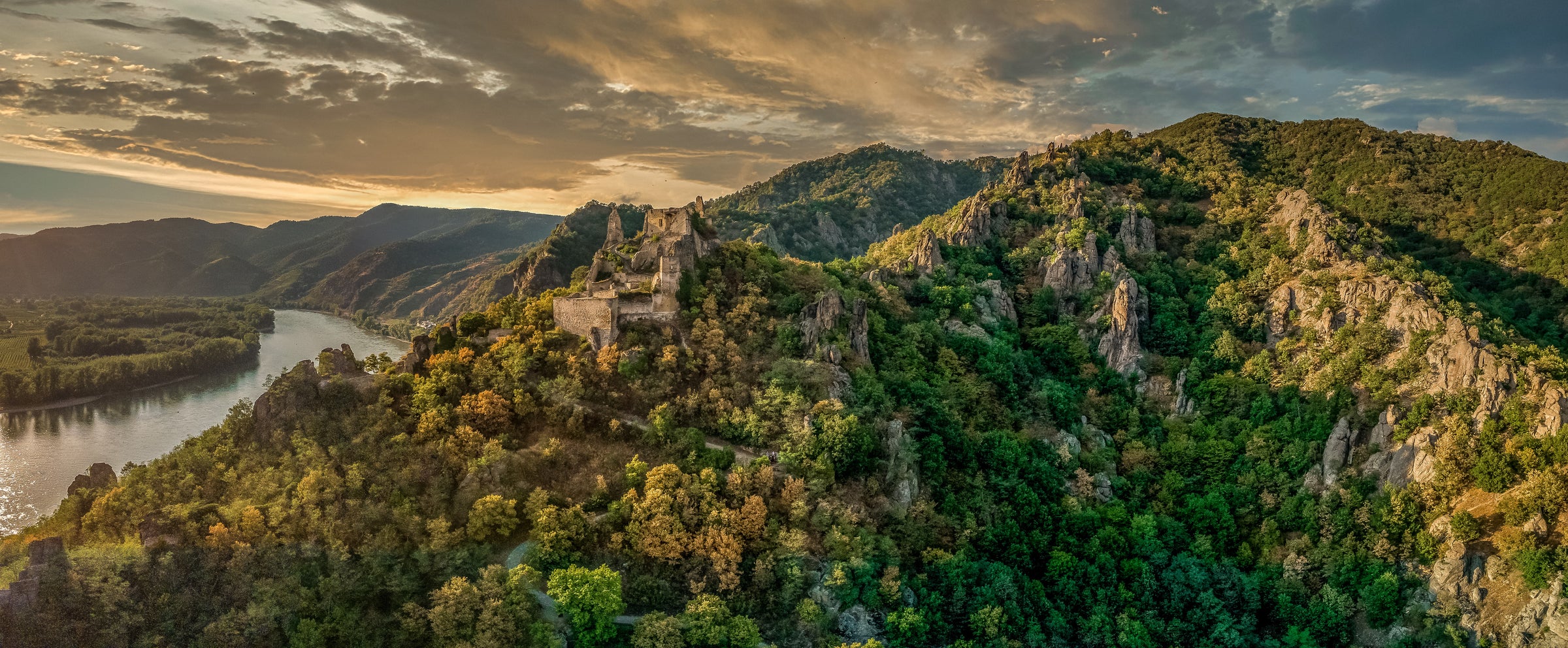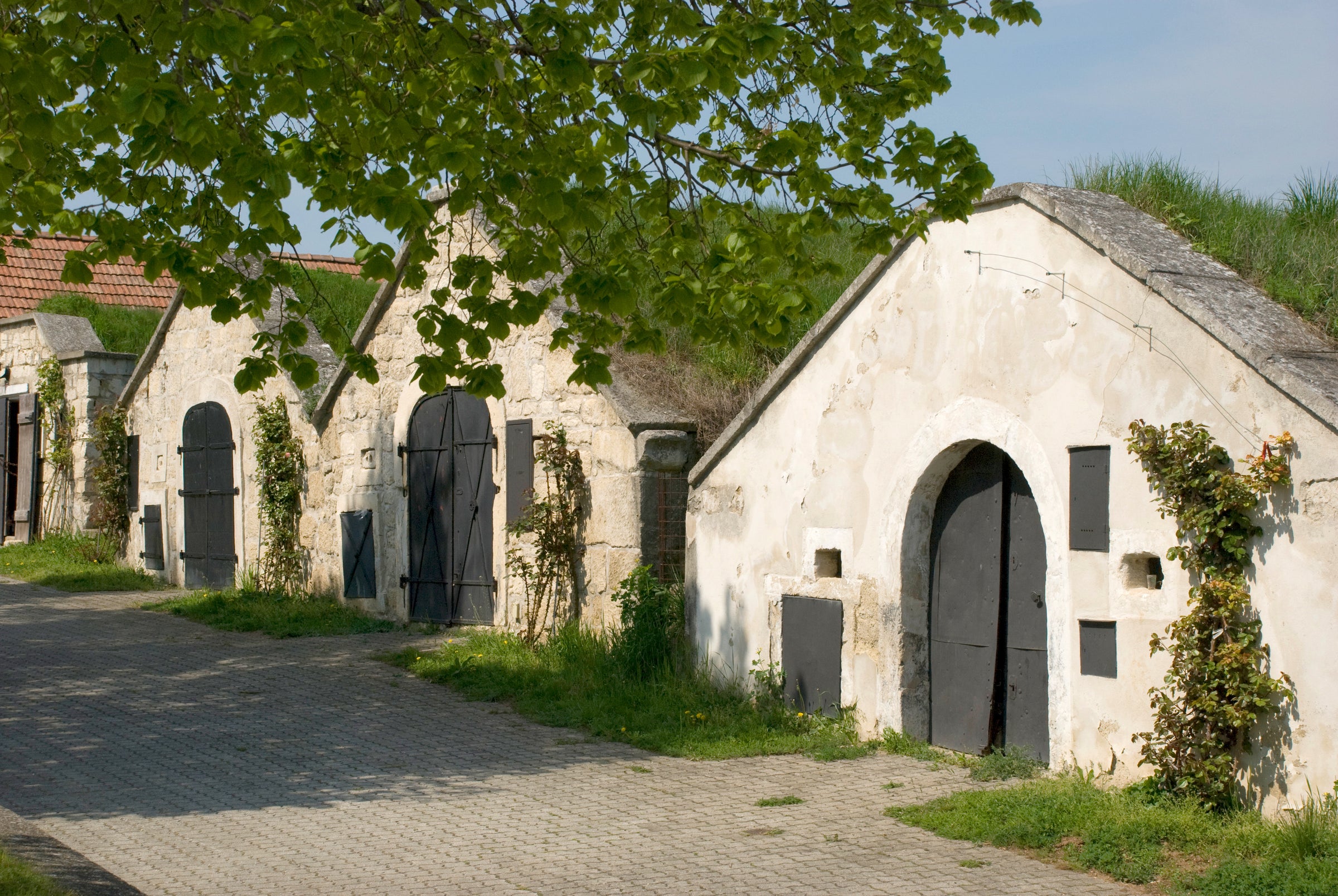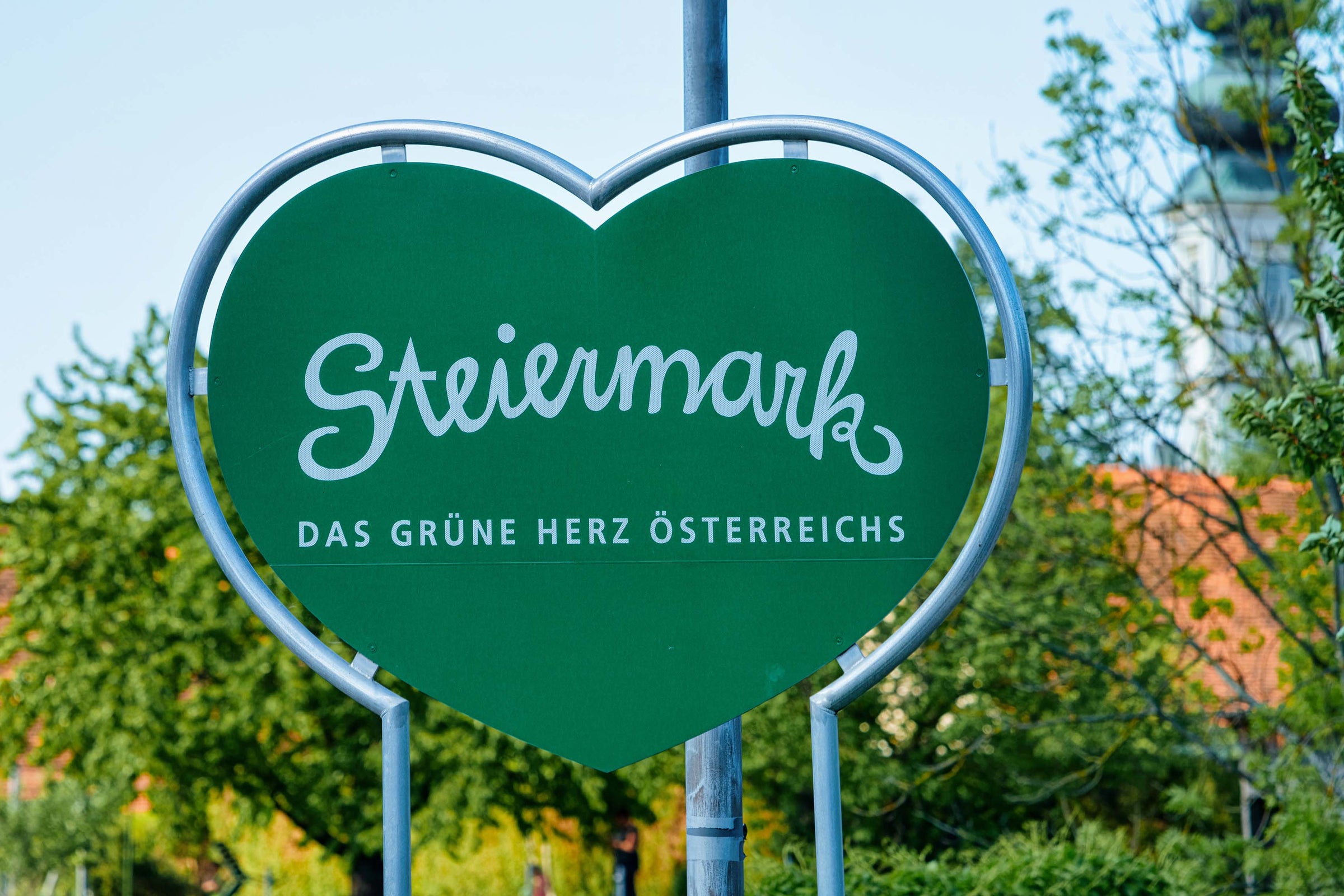A wine like this one is what sommeliers live for—it’s so singular, so authentic, so divergent from the conventional narrative that it generates excited chatter around the table. The challenge for me today is not just to decode its striking label but to adequately convey the anticipation around today’s offer.
This producer’s US importer brought in just 50 cases of this Blaufränkisch. Granted, Kolfok Güterweg is a tiny operation to begin with, but Austrian Blaufränkisch is still a niche item in our market, so maybe 50 cases was the right call. What I’m certain of, however, is that anyone smart enough to take some of this 2017 today is going to wish they bought more. If you look back through past SommSelect offers, you’ll see that we were Blaufränkisch believers well before this wine came along, but nevertheless, Kolfok Güterweg’s feels like a paradigm shift. Founded in 2015 by Stefan Wellanschitz, the Kolfok (regional dialect for “maverick” or “non-conformist”) Güterweg (“the good way”) winery is deserving of the brightest spotlight we can shine: Situated in the Mittelburgenland region of Austria, where Blaufränkisch has had pride of place for centuries, Wellanschitz’s organic vineyards are perched at high altitudes in geologically diverse soils, producing reds of exceptional refinement and complexity. This wine will move you, it will challenge you (in a good way), but best of all, it won’t cost you—it’s a top-tier red at a lower-tier price!
That said, let’s tackle this label: We’ve already addressed “Güterweg” and Blaufränkisch, so let’s home in on “Neckenmarkter,” which refers to the town of Neckenmarkt, one of the “grand cru” villages of the Mittelburgenland appellation. Located in southeastern Austria, near the border with Hungary (where Blaufränkisch is called Kékfrankos), the Neckenmarkt area is an extremely distinctive terroir: It sits within a broad basin protected by mountains to the north, west, and south, with vineyards perched at altitudes exceeding 500 meters in some spots. Whereas soils at lower elevations are comprised mostly of heavier clays, Wellanschitz’s vines are rooted in a poor and complex mix of granite, schist, and limestone. As in some of the white wine-producing zones along the Danube, the Mittelburgenland can see a push-pull of cooler currents from the west contrasted with warm, dry breezes from the Pannonian Plain to the east.
Stefan Wellanschitz hails from a winemaking family in Neckenmarkt whose roots in the area go back to the 19th century when Mittelburgenland was still considered “Hungarian” rather than Austrian. He spent many years making wine at his family’s estate before striking out on his own with a mission to make wines in the most natural, “transparent” way possible. He farms organically, allowing an assortment of other herbs and plants to sprout among the vines, and takes a minimalist approach in the cellar, moving wines by gravity only and employing sulfur only in minimal amounts at bottling.
Today’s wine was sourced from three vineyards in Neckenmarkt; Stefan vinifies the grapes from each site separately, in large Austrian oak casks of 1,200-liter capacity, then ages the wine in those same barrels for about 18 months before bottling the wines unfined and unfiltered. About 15% percent of the grape clusters are left intact during fermentation, which, as in many of the great wines of the northern Rhône, lends piquancy and backbone to the finished product. But if we’re going to compare this Blaufränkisch to any French wine, the more apt analog would be Premier Cru red Burgundy: the soil character, the perfume, the refinement, and the energy are all reminiscent of top-quality Burgundian Pinot Noir, albeit with a darker fruit character and a touch more weight.
If that comparison surprises you, perhaps you haven’t tried some of the other next-level Blaufränkisch wines we’ve offered here (producers such as Moric and Paul Achs spring immediately to mind). Most of the conventional thinking on this variety is that it makes “charming,” fruity reds, but in Neckenmarkt especially, Blaufränkisch is clearly capable of much, much more. In the glass, it is characteristically deep in color, with an inky ruby core moving to garnet and pink at the rim, with an aromatic profile that starts with lots of red and blue woodland berries and continues with roses and violets, lots of warm spice, underbrush, and black pepper. Even though I know better, I was expecting a plump, meaty red from this place and price point—not something so elegant and refined. It’s medium-bodied and firmly structured, with a long, aromatic finish that ensures it’ll remain lodged in your memory for some time to come. Enjoy it now and over the next 5-7 years in Burgundy stems after a 30-60-minute decant. At a cool 60 degrees, with some barbecued chicken or pork off the grill, this wine is going to be hard to top. Enjoy!


